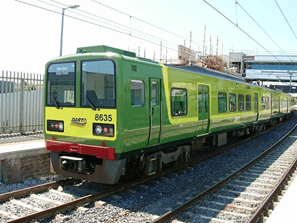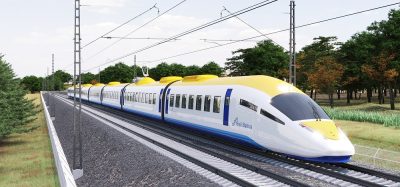Delays in rail infrastructure projects
Posted: 8 December 2016 | | No comments yet
Global Railway Review’s regular blogger Graham Ellis looks at rail infrastructure focusing on projects that are having problems or have been cancelled…




This month I am looking at rail infrastructure and specifically projects that are having problems or have been cancelled.
It has recently been announced that parts of the electrification of the Great Western route in the UK, from London to Swansea in west Wales, will be delayed because the costs cannot be contained within the current budget. That budget is currently planned to be massively overspent just electrifying the spine route from London to Didcot, about halfway along the planned route.
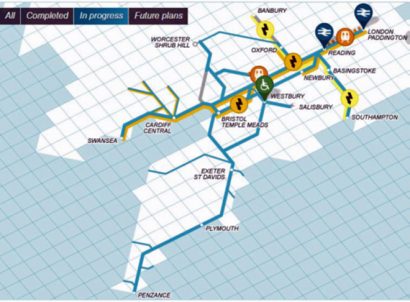

Original electrification plan
There is now a serious problem with this delay in that the route will be fully electrified some years later than planned; in fact parts of the route do not even have a completion date for the works meaning that it may never be achieved!! What is known as of today is that the section from London to Didcot in Oxfordshire will be completed by December 2017, 18 months late. The section from Didcot to Bristol parkway (on the outskirts of Bristol and not feeding the city centre) will be completed by December 2018, 30 months late and the further section from Bristol Parkway to the Welsh capital of Cardiff will be completed by the same date but that will be 18 months later than planned.
There will be a further extension of the system from Swindon to Bath by around April 2020, again delayed by some 32 months and the missing link between Bath and Bristol Temple Meads and the link back to Bristol Parkway will possibly be delayed until 2024, some six years after the planned completion date. The final piece of the jigsaw is the section between Cardiff and the Western end of the electrification to Swansea which again may or may not be completed by 2024, six years beyond the planned installation date.
This is not the only problem that the scheme faces though, new trains that were being procured for the electrified service have to be altered to bi-mode models, that is both diesel and electric traction is used. This will cause damage to the tracks as they are heavier than pure electric units and consume more power to achieve the same line speeds and in diesel mode they will probably be slower than the forty year old stock they are replacing, causing timetable problems and possible extended, rather than shortened journey times.
Adding to the rolling stock problems is the disruption to the planned cascade of older trains onto other routes. A large number of trains were to be moved onto other lines where they would allow either increased frequency/capacity or replacement of aged rolling stock.
All in all, this project has proved that there is a need to recruit staff that have specific knowledge of major electrification projects and not to rely on new staff that have only recently joined the organisation prior to any other similar projects having been undertaken. It also highlights that two other key electrification programmes could suffer potential delays due to this on-going delay problem.
Looking further afield, it is not only the UK that is suffering recently. The Irish state government announced that the plan to extend the metro system out to Dublin airport has again been cancelled. Back in 2015, the Irish government scrapped all of their plans and started again with a blank sheet of paper, and now they plan a single metro line out to Dublin airport and the surrounding area of Swords but not until 2027!! The original plan for two metro lines was announced as part of the Dublin Transport Office’s project report “Platform for Change” launched in November 2001. The idea was to develop an integrated transport strategy for the Greater Dublin region. That original integration plan has now been abandoned but there is still hope on the horizon in the form of a new private company called Metro Dublin which is headed by Cormac Rabbit
Metro Dublin is a new Mass Rapid Transit system that can achieve the highest quality of transit services that are ensured by its innovative design; the use of separate tracks from those of Irish Rail and the bridging of all crossing tracks and roads, the avoidance of train turn-back in the city centre and the use of new technology.
Metro Dublin is in line with Government Policy and Objectives to build rail based public transportation lines and in particular to extend the role of the public sector from transport owner and service provider to one of an enabler and the guardian of the general public interests and to treat all transport providers in the same way.
Metro Dublin will be procured through the Transport Act and Regulations by Consortium members who will provide capital, finance and design expertise and take the risks of planning, construction, passenger and operation. The State could through its agents issue permits, licenses, subsidy and assets. The EU could provide finance through the EIB and grants that are ear-marked for key cross-border and airport links and for other programmes such as to help meet reduced CO2 targets.
The Metro Dublin project will generate substantial revenue for the Exchequer and Local Authorities, part of which the State could use to purchase some or all of Metro Dublin over a period of twenty years.
Currently Metro Dublin is in statutory pre-application strategic consultation with the Irish Planning Board. The full story of the Dublin Metro was covered in Volume 13, issue 6, 2015 of Eurotransport which gives greater background into how the system will be developed.
What is interesting, alongside this, is that even though the two Dublin metro lines have been cancelled the state has been spending €15 million Euro’s on refurbishing the enterprise rolling stock for the Dublin-Belfast service.
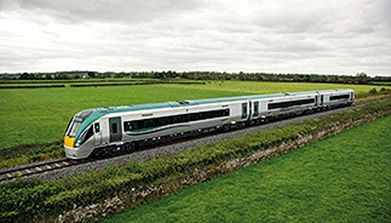

Dublin-Belfast Enterprise Intercity train
In addition they have sanctioned the refurbishment of 22 class 201 locomotives, (tender issued March 2016) and the possibility of replacing the 33 year old Dublin Area Rapid Transit (DART) rolling stock.
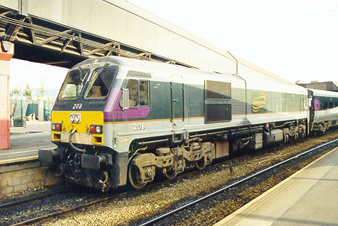

Class 201 locomotive
It is believed that specifications for the DART replacements are currently being drawn up for these replacements and that a decision is still needed on whether the rolling stock is going to remain as 1500V DC, dual voltage (to meet mainline electrification requirements) or even to move to AC power.
The procurement process is expected to commence sometime in 2017.
